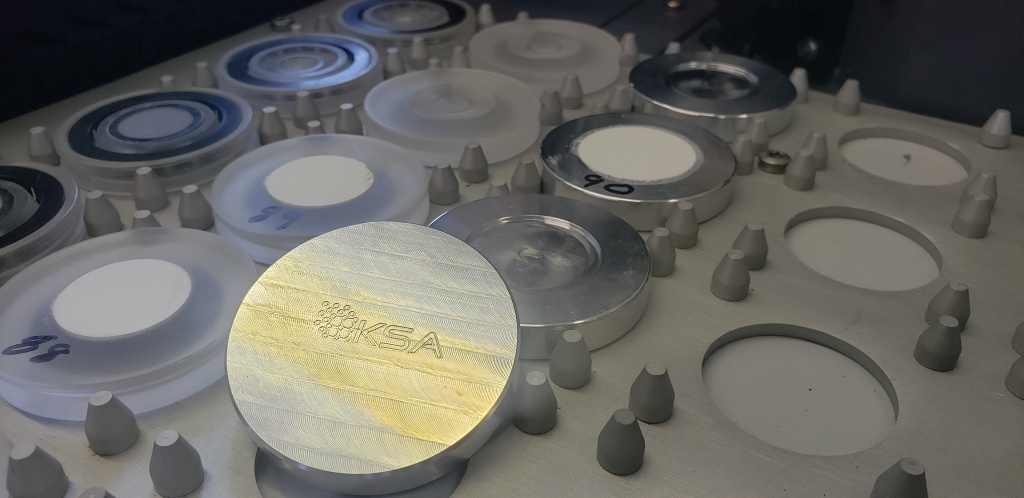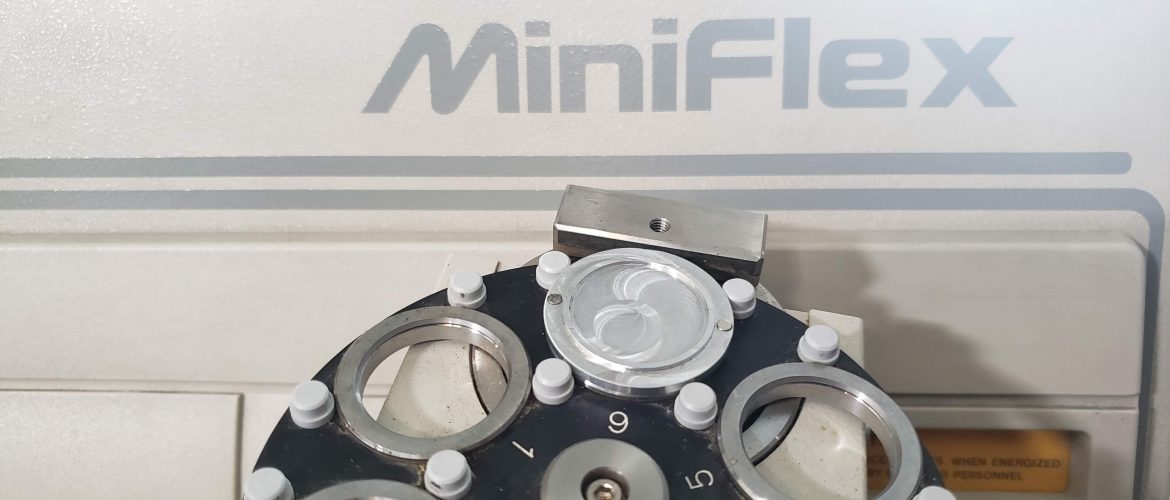The D4 Endeavor fits in a unique niche in the XRD world. It’s basically the same thing as a Bruker D8, but built into a very compact cabinet with a large autosampler on top. These machines see heavy use in the cement, pharmaceuticals, and aluminum industries among others. Today we have one headed out to a new home. It started life in the pharmaceutical world, but had light use so it was a great candidate for refurbishment.
There’s a simple and inverse relationship between the average atomic number of a given matrix and the efficiency with which it scatters X-rays. The effect isn’t all that much different from shining a flashlight on a white piece of paper. While it’s nothing like a mirror, you’ll definitely get light scattering off of it to some degree. This effect has strong effects on most XRD and XRF applications in that the additional photons must be dealt with somehow. This post
It’s easy to forget how much of our scientific work hinges upon comparative data. The entire field of metrology is concerned with the verification and maintenance of “standard reference materials” (SRMs). Creating a perfect reference standard essentially involves proving a negative. In the XRD world, we need to prove that there are no impurities, no crystalline defects, no unaccounted for thermal variations, no stress/strain effects present, and above all, that the first unit produced is effectively identical to the last
XRD tubes rely on the ability to precisely regulate the flow of electrons from the filament to the anode in order to create x-ray emissions. That requires a completely evacuated envelope to avoid having the high-voltage short to ground. The resulting symptom is that the high voltage generator will shut down almost instantly when the high-voltage potential is applied. This particular tube looked fine on the outside and didn’t even look all that old so it was a little surprising to
Curiosity may have killed the cat, but it’s the lifeblood of a well-functioning analytical lab. A few days ago, Todd was preparing a water chiller for shipping and washed out some corrosion products with acetic acid. The resulting solution was left in a beaker over the weekend and when we returned, he noticed that it had formed rather large crystals. So he did what any curious person with a lab full of XRD instrumentation would do. He ground it up
Plastic sample holders have been the default option XRD for decades. They’re inexpensive to make, good enough for most purposes, and very resistant to a wide range of chemicals. Seems like a “win” all around right? As long as they’re made correctly and from the proper materials, these work just fine. Spoiler alert: 3D printed thermoplastics have a distinct structure so if you try making your own, be sure they’re well out of the irradiated area. Comparison of the same powder
We’ve been experimenting with better ways to quantify the quality of XRD tubes in the shop. We use these tests on new and used tubes to monitor performance in two key areas. 1) Intensity 2) Spectral purity. What we’ve settled on is a test that involves a wavelength-dispersive approach which gives us a lot of intensity to work with while eliminating background scatter and fluorescence effects. Basically, we’re able to extract more information from the data because the “noise” is almost
KS Analytical Systems now offers custom sample holders for the Bruker D2 Phaser 6-position autosampler. These can be finished to order with any depth and diameter of well or a zero-background plate (ZBH) with or without a well ground in the surface.
Another fully-rebuilt, digital autosampler out in the wild. This one is on a system that already has one of our Si-Drift Detectors and an awesome ICDD Jade Pro/PDF-4+ software package. We’ve got all the fancy new hardware at our in-house lab, but when we need the absolute best data, this is our goto configuration.
KS Analytical Systems now offers custom sample holders for Rigaku Miniflex systems. The 6-position autosamplers and rotation stages (and even some fixed stages) make use of the magnetic disk design for holding powder without taking up much extra room in the diminutive benchtop. Top-loadingRear-loadingZero-background











